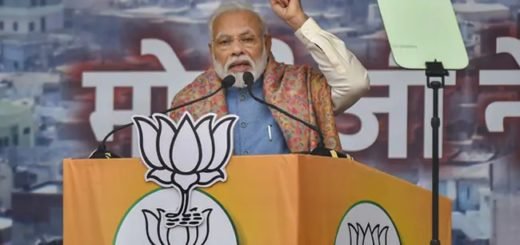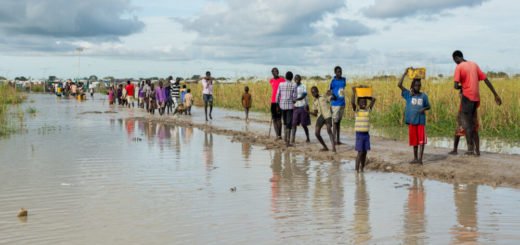Rethinking India-Nepal Relations

Introduction
The house of representatives of Nepal’s parliament on 13th June unanimously passed a second constitutional amendment bill guaranteeing the legal status for the updated political map of Nepal which includes Indian territory in the state of Uttarakhand. On 20th May, the Nepali cabinet unveiled its new political map exactly twelve days after the virtual inauguration of an 80 km road, connecting Lipulekh pass to Dharchula district in Uttarakhand, by India’s Defence Minister. The map invited a cautionary yet stern response from India over the inclusion of 335km square new area of Limpiyadhura along with the old contested 62 km square area of Kalapani comprising the Lipulekh pass. This incorporation of Limpiyadhura by Nepal, which is north-west of Garbiyang village in Uttrakhand and marking it as a point of origin of river Kali has created uneasiness in India-Nepal relations.
To delve deeper into this old-new boundary dispute there is a need to have an incisive overview which has its roots in colonial history, geopolitics and domestic affairs
Colonial Hangover
The Sugauli treaty of 1816 demarcated the political borders along the natural boundary between British India and Nepal. According to the treaty, Nepal comprised the area east of the origin of river Kali and west of Mechi river. The bone of contention has been this very point of origin of river Kali which the British cartographic surveyors kept on changing multiple times on the maps as the river has several origins both in Limpyadhura and Lipulekh creating confusion all along. From the very beginning, Nepal has challenged this demarcation and has asserted Limpyadhura as the origin of river Kali. Though Indian and Nepalese governments have resolved most of the boundary issues through the Joint Technical Level Boundary committee, but this particular territory still remains disputed.
Geopolitical underpinnings
Territorial integrity and political sovereignty of the nation-states has been a surviving legacy of the treaty of Westphalia which continues to guide international relations. Therefore it is imperative that both India and Nepal want to maintain the sanctity of their territories as realist theorists would suggest. This is all the more true for Nepal which, being a buffer state sandwiched between two big powers, is in perpetual existential threat.
Secondly, the disputed area is a tri-junction of India, Nepal and China border and has immense strategic significance. As the international structure is undergoing radical change with the aggressive rise of China and as Friedrich Ratzel mentioned in his essay “Lebensraum” (1901), the rising state expands to meet its increasing stature and might by expanding its boundaries. China is similarly remapping its geography and sphere of influence with its strategic expansion in South Asia thus threatening Indian ascendancy in its neighbourhood. China has time and again provoked the pressure points of India currently along LAC and Nathula, Doklam etc in the past.
Thirdly, Nepal is temporarily bandwagoning with China as a readjustment to the changing global scenario. Nepal has been pushed into the arms of China by India itself due to its continuing disengagement with Nepal.
Domestic realities
In the last week of April, the unified Nepal Communist Party suffered a serious internal rift as rival factions within the party threatened to unseat Prime Minister K. P. Sharma Oli. As the intra-party rift escalated, the Chinese Ambassador to Nepal held a series of meetings with top party leaders. According to local media reports, the Chinese ambassador requested that ruling party leaders maintain unity, and avoid a party split. The rival factions have since backtracked and have now put up a united front on the controversial new map.
Besides, there has been an increase in mistrust between India and Nepal following the 2015 blockade and the fears are resonating more among the youth in Nepal.
Countries are in need of recognition and equal treatment, especially the smaller countries. The big brother attitude of India towards its smaller neighbours has been ringing in Nepal for a very long time now and is reflected more so in the recent statement of Nepal’s Foreign Minister when he highlighted the contradictory approach of India where India can talk to China, but not Nepal.
Why India and Nepal cannot do without each other
Nepal is a buffer state and has been under constant existential crisis post-Tibet’s annexation by China. Nepal knows that India has no imperialist schema, unlike China with its palm and finger theory. Nepal has immensely benefited from India-Nepal Friendship treaty of 1950. Open borders have brought prosperity to both nations especially to Nepal. Both countries want the friendship to continue as security interests of both countries are increasingly converging in the backdrop of rising China.
Then why has Nepal upped the ante
Does Nepal really want to reclaim the territory? The answer may not be entire, yes but the passing of the amendment has hinted to a restructuring of India-Nepal relations which hitherto has been an unequal one. The contested area has a resource value for Nepal as it will provide an enlarged reliable water source to Nepal.
For a very long time now in Nepal, the friendship treaty of 1950 has been seen as an inferior deal and humiliating for Nepalese. The deal limits strategic manoeuvrability of Nepal and in the changing geopolitical realities, it wants more independence.
In addition, the unstable internal political situation in Nepal has given rise to a radical nationalist agenda which has further fueled this recent spat.
Realigning the Relations
- This issue has to be addressed by India by stepping into the shoes of Nepal and answering their problems. Track 1 Diplomacy with continuous high-level dialogue exchanges have become indispensable. India being the largest country in South Asia has to be sensitive to the concerns of its smaller neighbours.
- The youth of Nepal is distraught because of the domestic politico-economic situation and hence deserves to be proactively engaged by India through economic and cultural integration.
- Foreign secretary-level dialogues should resume with respect to the borders and amicable boundary solutions are required through the recently constituted Boundary Working Group.
- The Mahakali treaty should be revised by promising and implementing an equal water share.
- Revision of the 1950 treaty, which is based on the principles of equal treatment and mutual respect, will be instrumental in reversing the downward spiral in the relations.
- Lastly, India should decouple its Nepal policy from its China policy along with renewed regional partnership in South Asia which will, in turn, halt the rising resentment among our neighbours.
References
- https://www.orfonline.org/research/india-and-nepals-kalapani-border-dispute-an-explainer-65354/
- https://indianexpress.com/article/research/mapping-the-history-of-kalapani-dispute-between-india-and-nepal-6423687/
- https://indianexpress.com/article/explained/the-new-indian-road-to-lipu-lekh-nepals-protests-and-the-strategic-importance-of-the-area-6413914/
- https://www.thehindu.com/opinion/lead/for-a-reset-in-india-nepal-relations/article31697691.ece
- https://www.thehindu.com/news/national/why-are-india-and-nepal-fighting-over-kalapani/article31660401.ece
- Batra, Amita, 2018, ‘Political Economy of South Asia: Commonalities Overshadowed by Conflict’ (Chapter 12) in Routledge Handbook of Politics in Asia.
- https://kathmandupost.com/national/2020/05/20/government-unveils-new-political-map-including-kalapani-lipulekh-and-limpiyadhura-inside-nepal-borders
- https://en.wikipedia.org/wiki/Geopolitics#Friedrich_Ratzel


















